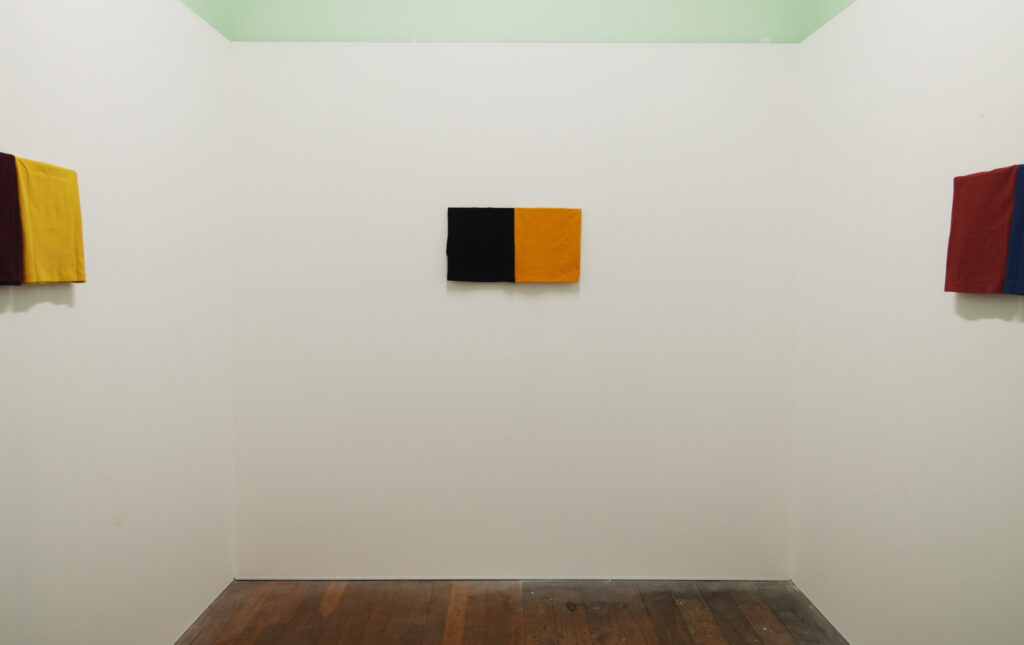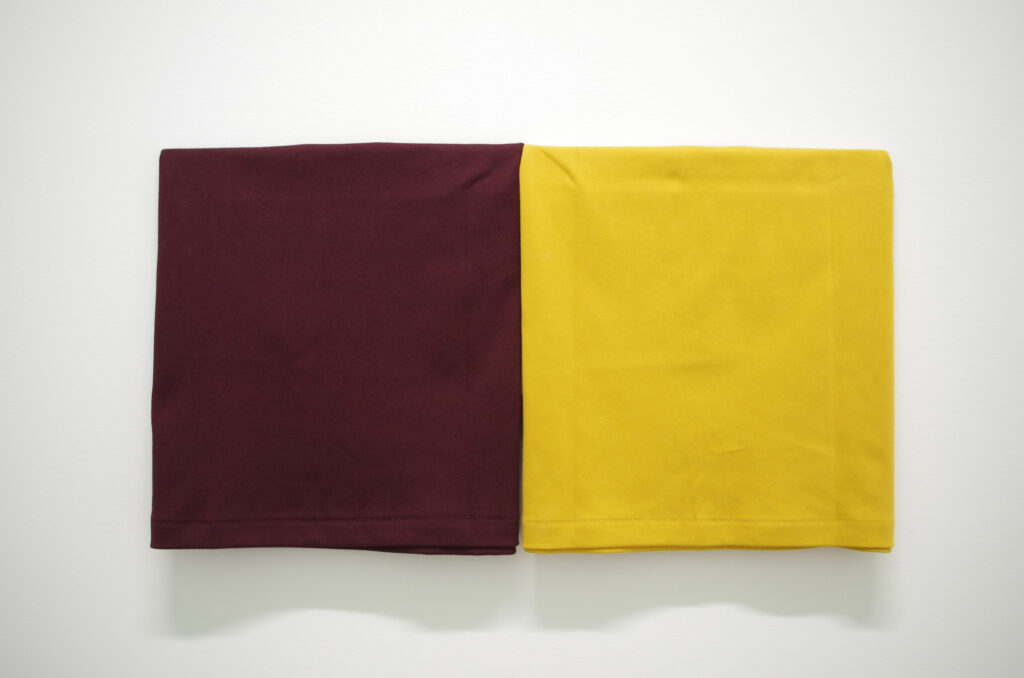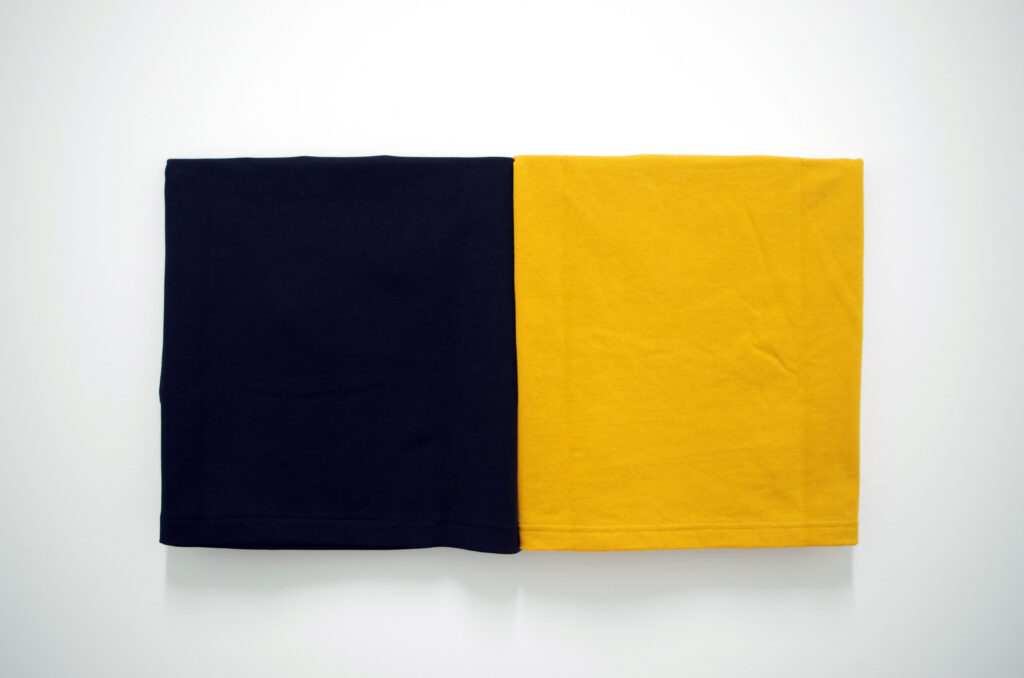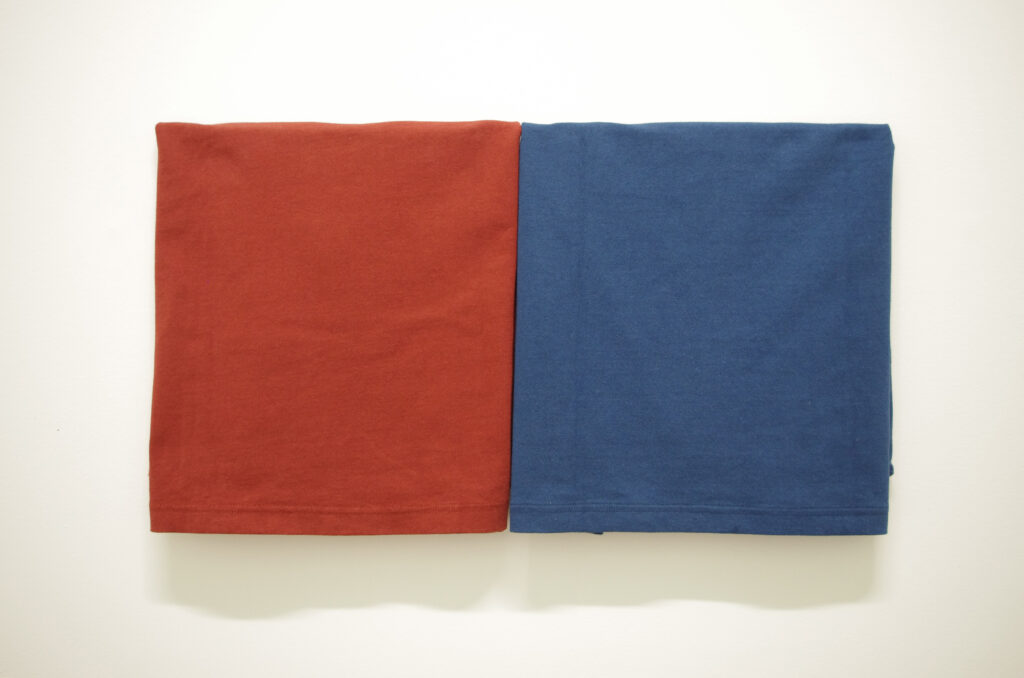Exhibition: Wardrobing
Artist: Mitchel Cumming
Gallery: Disneyland Paris
In a recent piece for Artlink art historian and critic Tara Heffernan raises suspicions around the ubiquity of care discourse as a subgenre of contemporary art discourse. Heffernan observes that ‘talk of care in the arts—like earlier theories buttressing relational aesthetics—echo the benevolent language that similarly glosses tyrannical HR bureaucracy, lubricating nepotistic networking with fuzzy talk of relationships, bonds, and community’.1 Heffernan’s suspicions are worth meditating on for at least two reasons. Firstly, community suggests an intimacy, familiarity, and sociality that appears increasingly ambivalent in lifeworlds dominated by surveillance capitalism. While the breakdown of community and civil society organisations has been a well-documented phenomenon, recent decades have seen growing concerns around the related expansion of social media platforms as forms of social and cultural compensation. As such, political theorists such as Anton Jäger question social media’s capture of political energies and queer writers like Benjamin Riley lament that ‘when we say queer community, what we usually mean now is demographic’.2 3 Put differently, and playing with the etymology of ‘demographic’, we can wonder whether community has been largely replaced by people posting alone. Indeed, whether organised around an identity, a political action, or the intersections of both, the transformation of communities of shared feeling, sensibility, and praxis into demographics to be commodified and monitored should concern us all. Secondly, and in tension with the first reason, this inflation of the discourse of care — arising at what seems like early stages of a major shift towards of the commodification of care and community — risks a conservative nostalgia for some kind of true or authentic communion between persons — or, in the case of art, between persons and objects. Indeed, and as was observed post Global Financial Crisis, craft, materiality, and objecthood has often functioned in the artworld as a kind of aesthetic gold standard — a means of articulating artistic value in a low confidence environment.
For this reason, when Heffernan writes, ‘what is the point of art if we’re not making “stuff”? Friendships aren’t artwork. At least, they probably shouldn’t be’, I find myself torn.4 On the one hand, so much talk of care and community seems like a way of avoiding the barriers to collective organising that are required to meet progressive aspirations for both recognition and redistribution. Moreover, the framing of art and artistic activity as a conciliation prize — one received as the welfare state is dismantled — risks assigning art an impossible task of providing care and community under hostile conditions caustic to sociality—an impossible task that artists and arts organisations will perhaps be, or perhaps are already being, punished for failing to achieve. On the other hand, I can’t shake a commitment to a version of the avant-garde and conceptual traditions, especially as regards a suspicion of the ‘authentic’ relationships between artist, viewer, and artwork. While I agree that friendship, community, and care shouldn’t function as the governing logics of artistic production and reception, we surely need to find a way to articulate this critique without downplaying the importance of the task of thinking the relationship between art and its publics.

I write this as a preamble to a review of Sydney based artist Mitchel Cumming’s exhibition Wardrobing at Disneyland Paris in Boorloo (Perth). Disneyland Paris is run by artist Dave Attwood, who had relocated from Naarm to Boorloo in 2022. Disneyland Paris resembles other artist run spaces — such as Guzzler, Asbestos, Knulp, Working at Heights, and Savage Garden, just to name a few — that follow neither the commercial gallery model nor the institutional governance-in-miniature of the ARI. Disneyland Paris typically exhibits post-conceptual work, especially by artists grappling with the legacies of the readymade. In this sense, Wardrobing fits neatly with the evolving curatorial vision of Disneyland Paris, and yet arguably helps us to think through key issues around the production, exhibition, and reception of contemporary art.

As described by Cumming, the show results from the following action repeated in triplicate: ‘two T-Shirts purchased from Uniqlo Carousel, displayed for the duration of the exhibition, before being returned for a full refund in line with the company’s change of mind policy’.5 Named after Blinky Palermo’s Stoffblider works or Cloth Pictures, Cumming’s folded t-shirts could be mistaken as a love letter to hard edged abstraction and anti-illusionist formal experiments. Like Palermo’s iconic works, Cumming has foregone the task of producing colour combinations — relying instead on the colours available at Uniqlo at the time of the works production. But whereas Palermo’s work further interrogated the formal aspects of painting — challenging received notions of support, ground, figure, and illusion —Cumming is instead interested in the ‘constructed’ character of aesthetic categories as such. Indeed, Cumming’s interest sits with the possibility that ‘once nominated, the [fact that the] readymade should have to remain an artwork in perpetuity seems [an] anathema to the radical challenge to taxonomies implied by the original gesture itself.’6 Cumming points to a problem that is both conceptual and political, and one that all true Duchamp-heads understand — i.e. that the very celebration of readymades as objects, and to some extent the very lionisation of Duchamp as a kind of genius, undermines what is both artistically and politically novel about the readymade gesture. As a strategy for interrogating this problem, Cumming proposes the strategy of the ‘temporarymade’. As he writes,
as a de/nomination of the readymade, the temporarymade involves a form of catch-and-release that doesn’t imagine the aesthetic as an endpoint, but rather a transitory moment in the life of an object. As a work, the temporarymade is only complete when its object is relinquished: given the opportunity to move again between categories (or beyond them).7

It seems then that the temporarymade works to literalise the social practice of enriching objects discursively such that they become artworks. By returning the t-shirts to the nominated retailer, and thus ending their status as art objects, the processes of art’s social production is rendered more legible. Against the reification of objects as inherently valuable or interesting — even those objects that exhibit high degrees of important technical skill or those that are made by ‘inherently’ interesting or provocative celebrity artists — the temporarymade confronts the viewer with the socially produced — which is to say co-produced — character of art. Furthermore, the temporarymade reaffirms the importance of the decommodification of art. As Cumming reminds the viewer, the show’s title refers to ‘a form of soft retail fraud in which shoppers will purchase an item of clothing (often something they can't really afford), wear it once (to a special event, for a photoshoot, etc) and then return it.’8
Accordingly, the temporarymade could be seen as evincing a kind of Rex effect. On the one hand, Cumming reveals himself as a proponent of Rex Hunt thought, in that the temporarymade considers the ethics of ‘kissing them and throwing them back’. The act of producing artworks and sharing that production with others is privileged, such that the artist can engage in a kind of cost neutral practice, and without adding to the existing stockpile of artworks. On the other hand, the temporarymade raises the problem of the corpus Rex, the king’s two bodies — that is, to borrow a problem from political theology, the issues of how the material body relates to the monarchical body, or, transposed into art discourse, how the materiality of an object relates to the corpus of the artist. While the temporarymade as art object perishes along with the conclusion of an exhibition and the return of the art object to the status of purchasable commodity, the artwork lives on as part of an ever-expanding body of online documentation and discourse. Artworks, like royals, can age and even perish. Nevertheless, the discursive corpus, oeuvre, or body of work, lives on and cannot be eliminated with an individual gesture.
As such, there is a tension within the temporarymade between its embrace of transience and impermanence, and its reliance on the co-production and reproduction of art through discourse, viewership, and institutional action. The latter requires its own consumption of commodities — especially related to energy — and poses its own challenges of sustainability beyond the finances of the artist. Indeed, most of the art seen comes via online archives, and the possibilities of online dissemination and discussion creates its own challenges with regards to energy consumption — as is evinced by studies that purport to show that the circulation of some of Cristiano Ronaldo’s more popular Instagram posts consume more energy than ten average UK households. With this in mind, one could wonder whether the strategy of the temporarymade encourages the further acceleration of art exhibitions and the pressure for the artist to expand their corpus insofar as it facilitates the quick turnover of art exhibitions, and resonates with emerging online modes of curation and exhibition.
The success of Cumming’s temporarymade strategy, then, is to be assessed in terms of the extent to which it brings these tensions to light. Wardrobing is compelling in its emphasis on the exhibition as a site for the co-production of art. The temporarymade, like many artist run spaces today, functions to occasion the sharing of art — and seemingly for no other purpose than to facilitate such an occasioning. This is a point made perhaps most convincingly by Rex Butler with regards to the work of the late John Nixon. For Butler, the ARI, like Nixon’s work, finds its ‘fundamental justification’ in the fact that it ‘continue to carry on, despite all of the factors mitigating against them’.9 For Butler, ‘what [Nixon’s] work ultimately testified to was not anything the curator might put to it, but only itself. It was precisely — and perhaps in the end we might need a religious vocabulary for this — self-evident’.10 Drawing on Butler’s reading of Nixon then, we could argue that the temporarymade maintains a certain avant-garde ethos, insofar as approaches the artistic gesture as the withdrawal of objects, experiences, thoughts, and actions from their circulation in other discourses or markets.

To return to Heffernan’s provocations around care and community, exhibitions like Wardrobing and spaces like Disneyland Paris help us to consider the value of art as something that facilitates a certain kind of sharing or collectivity that is without instrumental use or telos. This is not to say that art’s value is in its valuelessness, or that art is valuable because it is useless. Instead, it is simply to point out that what precipitates art’s value is this sharing — and a sharing that that has not predetermined why it is important or worthwhile for artists and art’s publics to assemble. To try and think through this question of sharing is to both affirm the value of art as friendship and as community, without falling into the instrumentalist and neoliberal logics so well-critiqued by Heffernan. To paraphrase the late Jean-Luc Nancy, this is to think of art as facilitating community without communion — community without something already present and available to share, and yet that is paradoxically shared. This paradox seems to be at the heart of the temporarymade’s vanishing act, insofar as a public forms to bear witness to an artwork that can only exist in a shared future.
Francis Russell is a lecturer in the faculty of humanities at Curtin University, Western Australia. His research primarily focuses on madness, alienation, and neoliberal culture. Alongside Ben Rich and Eva Bujalka, he is the co-director of the Curtin Extremism Research Network.
un Projects’ Editor-in-Residence Program is supported by the City of Yarra.